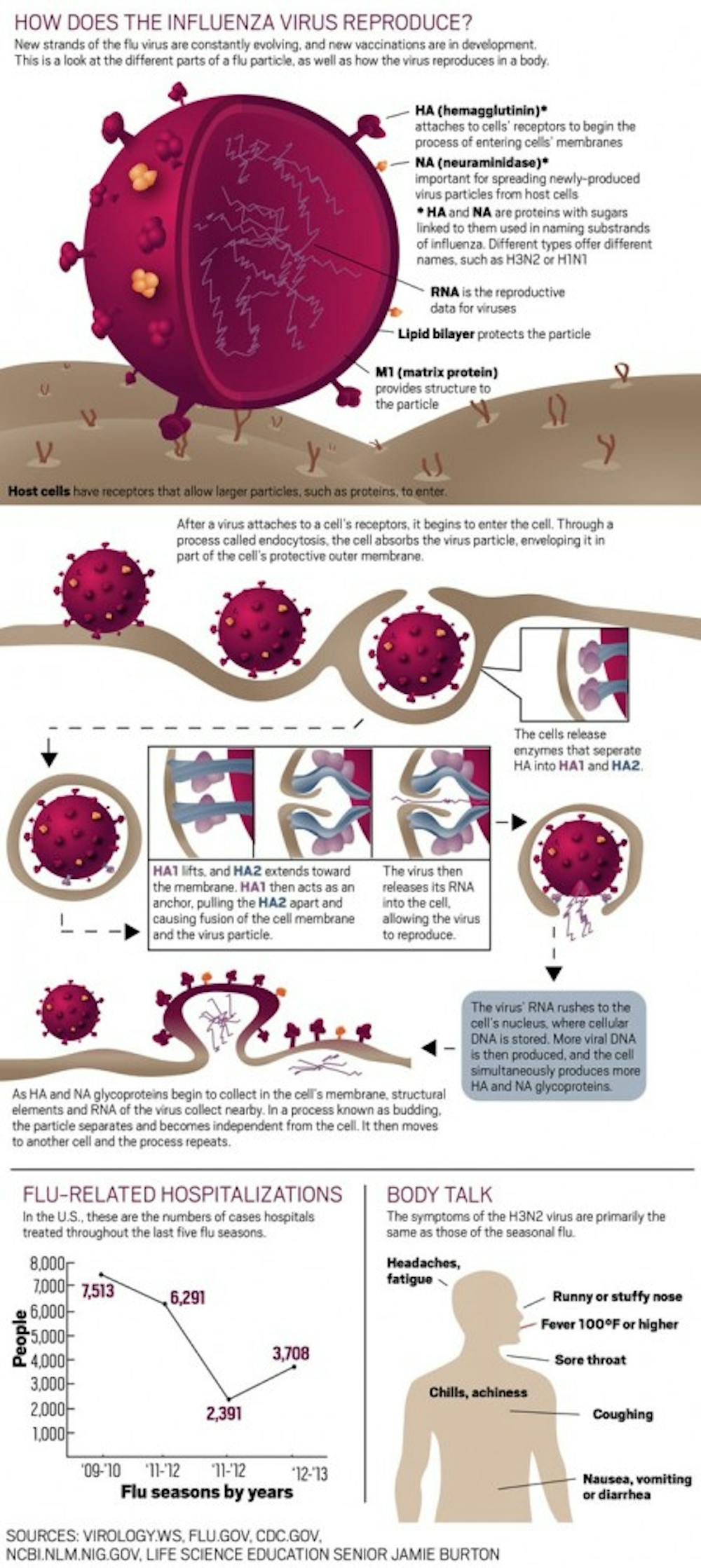A shortage in flu vaccincations is causing the Ball State Student Health Center to turn away students seeking flu vaccinations at the same time the U.S. Centers for Disease Control and Preventation declared the continuing flu season an epidemic.
Dr. Kent Bullis, medical director at the Health Center, said they will no longer offer the vaccine because it is no longer available.
The Health Center budgeted $20,000 for the flu vaccination this season. It distributed approximately 700 flu shots this fall, about 150 to 200 more than previous years, at four temporary clinics until it ran out in November.
“The most important thing is that we evaluate them to make sure it’s the flu and make sure they are medically stable and not in any danger of complications from the flu,” Bullis said.
IU Health Ball Memorial Hospital has already reported 133 influenza cases as of Friday, four times last year’s total amount.
Ball Memorial Hospital never offers flu vaccinations, but it prepares for the flu season by requiring all 3,000 of its employees to have a flu shot and by limiting visitation to prevent the virus from spreading, said Jeff Bird, chief medical officer at Ball Memorial Hospital.
The Walgreens on Jackson Street is still offering flu shots despite the increased demand. Store manager Dov Lang said it still has an “adequate supply” of the vaccine and will be receiving several more vials in the near future.
Six students tested positive for influenza at the Health Center since the start of Spring Semester, and 20 people have been hospitalized at Ball Memorial Hospital this flu season.
According to the Indiana State Department, the death toll in Indiana has risen to 15, but there have been no deaths in Muncie attributed to the influenza virus.
“We are right in line with what has been happening across the nation and across the state,” Bird said. “... We are certainly seeing a fairly dramatic increase in the number of positive tests.”
Bird said what makes the virus so dangerous is its “virulence.” Different flu strains have different virulence that affect different variables of the strain. Virulence determines how easily the strain is passed from one person to another, how rapidly it multiplies inside the body and if it has any affinity to cause particular problems such as pneumonia, which is a complication of the flu.
Of the 133 flu positive patients at Ball Memorial, 128 had an A strain, which includes the most common and aggressive H3N2 virus. Five had B strains, which generally don’t affect the body as evasively, Bird said.
Statewide there were 277 cases of H3’s identified in the 2012-13 flu season, while there were only six in the 2011-12 season and nine in the 2010-11 season.
“What we’re concerned about in medicine are the high-risk people and the high-risk people are newborns, pregnant women, the elderly and people with chronic diseases,” Bird said. “Any of our employees who are ill are required to stay home. We have signage around the hospital to warn people we are trying to limit visitation particularly in our highest risk areas, like the intensive care unit.”
Common symptoms of the flu include a fever of 100 degrees Farenheit or higher, a cough or sore throat, a runny or stuffy nose, headaches, body aches, chills, fatigue, nausea, vomiting and diarrhea, according to flu.gov.
Bullis also said he tells students to avoid transmitting the flu to others and get plenty of fluids and rest. He said the flu usually runs its course in seven to 10 days, but if anyone experiences shortness of breath or difficulty holding down food or fluids, they should go back to the health center or go to the emergency room to be reexamined for further complications.
According to Bird adhering to the standard, universal precautions such as washing hands and staying in when sick are also important to decrease the “transmission of community acquired flu.”
“A week or two from now we may be in a much worse position,” Bird said. “So the take-away message is, if you haven’t been immunized for flu yet, go get your flu shot and get it yesterday.”


